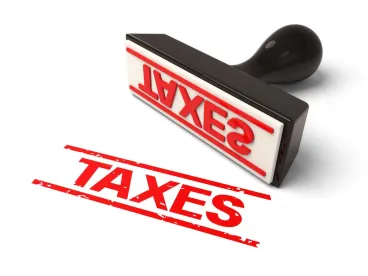Summary
New Internal Revenue Service temporary regulations provide guidance on the income inclusion rules that apply when a lessor elects to treat a lessee as having acquired investment credit property under Treas. Reg. § 1.48-4. As expected, the new temporary regulations also provide that a partner of a lessee partnership cannot increase its basis in its partnership interest for this income inclusion.
In Depth
New Internal Revenue Service (IRS) temporary regulations provide guidance on the income inclusion rules that apply when a lessor elects to treat a lessee as having acquired investment credit property under Treas. Reg. § 1.48-4. As expected, the new temporary regulations also provide that a partner of a lessee partnership cannot increase its basis in its partnership interest for this income inclusion.
Internal Revenue Code (IRC) § 50(c) provides that if a credit is determined under the rules for determining the investment credit with respect to any property, the basis of such property shall be reduced by the amount of the credit. Treas. Reg. § 1.50-1T(b) provides the general rules for coordinating these basis adjustment rules with the rules pursuant to which a lessor may elect to treat the lessee of investment credit property as having acquired such property for purposes of calculating the investment credit.
Under Treas. Reg. § 1.50-1T(b)(1), the lessor is not required to reduce its basis in the property by the amount of the investment credit determined under IRC § 46 (or 50 percent of the amount of the credit in the case of the energy credit under IRC § 48). That burden falls on the lessee, but the lessee does not have basis in the leased property. As a result, a lessee of investment credit property instead must include in gross income an amount equal to the amount of the credit (or, in the case of the IRC § 48 energy credit, 50 percent of the amount of the credit) determined under IRC § 46 (the amount of the investment credit). Generally, the lessee includes such amount ratably over the shortest recovery period applicable under the accelerated cost recovery system provided in § 168, beginning on the date the investment credit property is placed in service and continuing on each one-year anniversary date thereafter until the end of the applicable recovery period. The temporary regulations apply these same income inclusion rules but add additional detail.
Treas. Reg. § 1.50-1T(b)(3) provides that, in the case of a partnership for which an election is made, each partner that is the “ultimate credit claimant” is treated as the lessee for purposes of the income inclusion rules under Treas. Reg. § 1.50-1T(b)(2). The income inclusion amount, under these temporary regulations, is therefore a partner item rather than a partnership item. As a consequence of these rules, each partner in the lessee partnership must separately compute the investment credit based on each partner’s share of the investment credit property, based on partner level limitations.
According to the US Department of the Treasury and the IRS, this new rule is intended to match the burden of income inclusion to the benefits allowed by the credit. In the preamble to the temporary regulations, the government states that partnerships have taken the position that this income is includable by the partnership/lessee, and that their partners or shareholders may increase their bases in their partnership interests as a result of the income inclusion. Because the applicable income inclusion is partner level income, and not partnership level income, the partnership rules do not apply to the income. For example, § 705 would generally provide for an increase in the partner’s outside basis in the partnership for items of partnership income. However, the Treasury and the IRS take the position that § 705 does not properly apply, and therefore no outside basis increase is allowed. A similar rule under the temporary regulations is applicable to shareholders in S corporations.
In addition, the temporary regulations clarify that if the investment credit recapture rules are triggered, including in the event of a lease termination, an adjustment will be made to account for discrepancies between the income inclusion amount already included in gross income and the amount that would have been included based on the total amount of the credit allowed after recapture. This amount is taken into account in the year of the recapture event. If a lessee terminates its lease or otherwise disposes of the investment credit property and recapture is not triggered (i.e., the termination or disposition is outside of the recapture period), the temporary regulations permit the lessee to make an irrevocable election to include in gross income any remaining lessee income inclusion amount in the taxable year of termination or disposition. Without such an election, the income inclusion would continue to be taken into account over the applicable recovery period for the relevant property.
The new temporary regulations apply to investment credit property placed in service after September 18, 2016.





 />i
/>i

